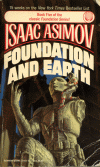I wasn’t sure what to expect from Timothy Zahn after the first book in this series. Johnny, the main character from the first book, now has three sons. The eldest at 27 is involved in politics, just like Johnny. The two other sons are a pair of twins, one which becomes a Cobra. I was hoping that there would be more action, but for the first third of the book I was fairly disappointed. It consisted mostly of political ramblings concerning a very controversial offer that one of the Troft trading partners proposed. They had identified a world near Troft space that was considered a significant threat. If the Cobras could neutralize this threat, the Trofts were willing to give the colony five new worlds.
After about 100 pages of hemming and hawing over ethical dilemmas, the Aventine government finally decided to launch a reconnaissance mission. The mission would be split into two parts. While the researchers determined if the worlds the Trofts were offering are viable, the Cobras would assess the threat on the alien world. What they didn’t expect was that the aliens were actually humans that split off from the Dominion of Man thousands of years ago.
These people named their planet Qasama and have been confined to their world since they lost their star drive technology. They all have these birds on their shoulders called Mojos which act as protectors. Everyone carries guns for defense against the dangerous wildlife, but if any Qasaman threatens another, the Mojos intervene. Because of this, there is virtually no serious fighting between Qasamans as far as war is concerned.
The Qasamans appear to be relatively friendly and willing to show the Aventinians the inner workings of their society. That didn’t last for long, because the Qasamans decided to try and steal the landing ship so they could study it and rediscover star drive technology. They weren’t counting on Cobras to be in the landing party, so had quite a surprise.
After this point, the story picked up quite a bit. The rest of the book was mostly battles between the landing party and the Qasamans. There was quite a bit more action than in the first book, which I appreciated, but it seemed that when the story was starting to get good, it ended. Overall, this book was better than the first one, so if you already have time invested, you might as well read the sequel.



